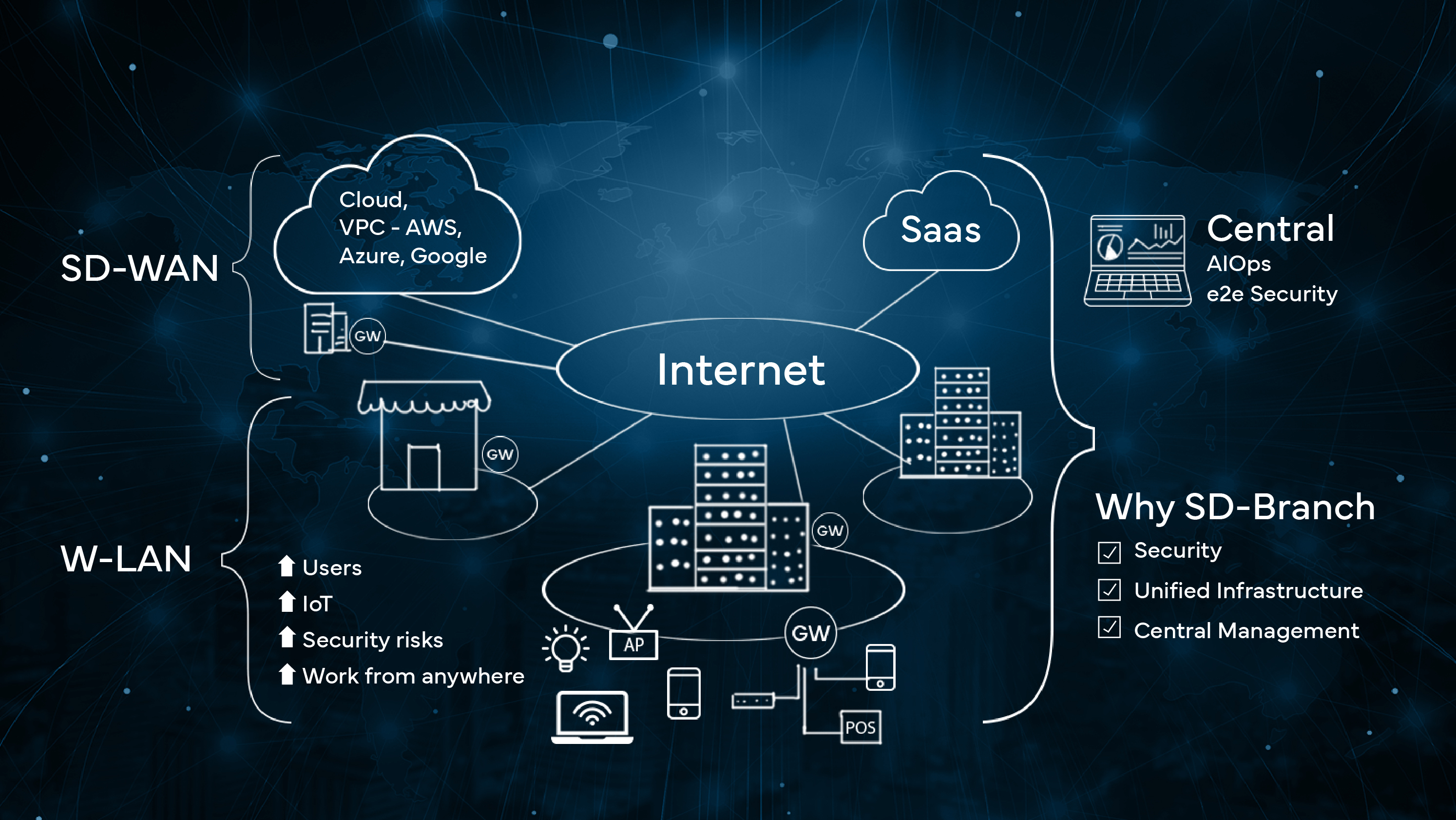Comparing SLA Terms in Business Internet: Key Factors to Know
-
April 7, 2025
-
7 min read

Every business today depends on a stable and high-performing internet connection. A single hour of downtime can disrupt operations, delay client communications, and result in financial losses. Yet, many businesses choose an internet provider based only on speed and pricing, overlooking the most critical factor—the Service Level Agreement (SLA).
An SLA defines the actual quality of service a provider must deliver. It sets commitments on uptime, latency, fault resolution, and compensation in case of service failures. Without a strong SLA, businesses risk frequent disruptions, slow support response times, and vague compensation policies. Understanding and comparing SLA terms in business internet helps businesses avoid these pitfalls and choose a provider that meets their operational needs.
This guide breaks down the essential SLA components to watch for, helping businesses make an informed decision when selecting an internet provider.
Key SLA Components to Compare
1. Uptime Commitments and Penalties
The uptime percentage defines how often the service remains operational. Business internet providers typically offer uptime guarantees of 99.5% to 99.99%. The difference appears small but translates into significant downtime annually.
- 5% uptime allows for over 43 hours of downtime per year.
- 9% uptime reduces downtime to 8.7 hours per year.
- 99% uptime further lowers it to 52 minutes per year.
A provider offering a high uptime percentage charges a premium but reduces operational disruptions. Checking how the provider calculates downtime is equally important. Some exclude maintenance periods, reducing compensation eligibility. Businesses must carefully assess SLA terms in business internet uptime clauses to avoid misleading guarantees.
2. Latency and Packet Loss
Latency and packet loss affect real-time applications such as VoIP, video conferencing, and financial transactions. SLAs define acceptable thresholds so that businesses receive the performance they expect.
- Latency measures the time data takes to travel from the source to the destination. Most providers specify latency for domestic and international traffic separately. Typical figures range between 5ms–50ms for domestic traffic and 100ms–250ms for international routes.
- Packet loss indicates the percentage of lost data packets. A high packet loss affects call quality and data transmission. Most SLAs promise a packet loss rate below 0.1%.
Knowing these metrics allows businesses to assess network performance beyond raw speed figures.
Internet leased lines offer a significant advantage in latency management. Since the connection is dedicated, businesses experience lower fluctuations in speed and latency, making them ideal for mission-critical applications.
3. Fault Resolution Timelines
Even providers offering high uptime experience occasional faults. The SLA defines the maximum time a provider takes to resolve issues. Response and resolution times differ:
- Response time indicates how quickly a provider acknowledges a fault.
- Resolution time specifies the deadline for restoring service.
Response times range from 15 minutes to 4 hours, while resolution times vary from 2 hours to 24 hours. A provider with a dedicated business support team offers faster resolutions. SLAs should clearly outline how businesses can escalate unresolved issues.
4. Support Availability and Response Quality
The quality of customer support directly affects downtime and productivity losses. SLAs should specify:
- 24/7 support availability for business users. Some providers restrict support to business hours, increasing delays.
- Priority handling for enterprise customers. Providers with corporate postpaid plans often offer faster response times.
- Escalation paths for unresolved tickets. A clear hierarchy allows businesses to push unresolved issues to higher levels.
Many providers promote ‘priority support’ without specifying response and resolution timelines. Reviewing SLA terms in business internet helps businesses confirm that they will definitely get the level of support they expect.
5. Compensation Structure
SLAs should outline clear compensation terms if service levels drop below agreed thresholds. Compensation models vary:
- Percentage-based service credits: A provider may offer 5%–20% of the monthly bill for failing to meet uptime targets.
- Fixed credit per hour of downtime: Some providers offer a flat amount per hour of service failure.
- Refunds for multiple failures: If downtime occurs repeatedly within a billing cycle, businesses may receive a larger refund.
Businesses must evaluate how compensation applies. Some providers cap total credits, limiting financial recovery. Others exclude claims if downtime results from factors like fibre cuts or power failures at the customer’s premises.
6. Scalability and Bandwidth Guarantees
As businesses expand, internet usage grows. SLAs should define:
- Bandwidth guarantees that the promised speed remains available during peak hours. Without this, businesses may experience congestion.
- Upgrade terms allow businesses to increase bandwidth without renegotiating the contract.
- Downgrade flexibility for adjusting speeds if requirements change.
Providers with corporate postpaid plans often allow greater flexibility in adjusting bandwidth compared to standard business packages. Businesses needing dedicated high-speed access should evaluate these terms carefully.
7. Service Exclusions and Limitations
Some SLAs exclude key scenarios from compensation:
- Scheduled maintenance: Downtime during maintenance may not count towards uptime calculations.
- External factors: Providers may exclude failures due to power outages, natural disasters, or third-party network issues.
- Customer-side issues: If an internal network fault causes the problem, the provider has no obligation to compensate.
Businesses must read the fine print to avoid disputes over downtime claims.
How Do Business Internet Providers Differ in Their SLA Terms?
Different providers structure their SLA terms based on their network infrastructure, customer base, and service quality. Below are common variations seen in the market:
- Premium Providers: Offer 99.99% uptime, strict latency guarantees, and rapid response times. SLAs include financial compensation for failure to meet commitments. These providers cater to large enterprises.
- Mid-Tier Providers: Provide 99.5% to 99.9% uptime, decent latency commitments, and response times within a few hours. Compensation terms may be limited.
- Budget Providers: Offer lower uptime commitments (99% or below) and lack strict latency or resolution guarantees. Compensation policies are often vague.
Premium plans, including corporate postpaid plans, often include stronger SLA terms. Businesses relying on cloud-based applications or real-time communication should consider these high-end options.
How to Evaluate Providers Based on SLA Strength? A Brief Look
Here are some different aspects and SLA terms in business internet that you must carefully go through to choose the right provider:
| SLA Component | What to Look For |
| Uptime | 99.9% or higher for critical applications |
| Latency | Defined limits for domestic and international routes |
| Packet Loss | Below 0.1% for uninterrupted service |
| Response Time | 15 minutes or less for enterprise support |
| Resolution Time | 2–4 hours for major faults |
| Compensation | Automatic credits with no application required |
| Scalability | Flexible upgrades and downgrades without penalties |
| Support Availability | 24/7 availability with priority handling |
Businesses relying on uninterrupted connectivity should choose providers offering strong commitments in these areas.
Airtel Office Internet: High-Speed Connectivity for Businesses
Businesses need a fast and stable internet connection to maintain seamless operations, especially when handling cloud applications, video conferencing, and critical data transfers. Airtel office internet provides enterprise-grade broadband solutions designed for reliability, speed, and security, making it a strong choice for businesses of all sizes.
Top Features and Benefits
- High-Speed Connectivity: Offers business broadband plans with speeds up to 1 Gbps so that you enjoy smooth operations for bandwidth-intensive tasks such as cloud computing and large file transfers.
- Dedicated Business Support: Unlike residential broadband, you benefit from the priority support, which reduces downtime and helps in quick resolution of issues.
- Symmetric Upload and Download Speeds: Businesses using video conferencing, remote collaboration, and cloud applications benefit from equal upload and download speeds, enhancing overall productivity.
- Static IP Options: Organisations requiring remote access, web hosting, or secure VPN connections can opt for static IP addresses, enhancing network stability and security.
- Enterprise-Grade Security: Built-in security features, including firewall protection and malware defence, safeguard business networks against cyber threats.
- Scalability: Allows easy upgrades so that businesses can scale their internet bandwidth as their operations grow.
- Competitive Pricing: Plans start from ₹499, making it accessible for businesses of different sizes while maintaining quality service.
Airtel office internet provides businesses with a secure, high-performance broadband solution tailored for professional needs. In simple words, you enjoy uninterrupted connectivity and enhanced efficiency.
Final Words
This guide highlighted the essential SLA terms in business internet to watch for. Note that while many providers advertise high speeds, the real measure of service quality lies in uptime guarantees, latency commitments, fault resolution timelines, and compensation structures. A detailed review of these terms helps businesses avoid unexpected downtime, financial losses, and poor support experiences.
For businesses looking for a reliable and high-speed connectivity solution, Airtel office internet offers enterprise-grade broadband with strong SLA commitments. With high-speed plans, priority business support, low latency, and enterprise-grade security, Airtel ensures that businesses stay connected without disruptions.
Whether scaling operations, managing remote teams, or handling critical cloud applications, Airtel offers an efficient internet solution made for professional needs.
 Share
Share









